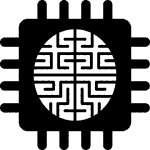Electrical & Computer Engineering, Department of
Document Type
Article
Date of this Version
10-4-2023
Citation
ChemistrySelect 2023, 8, e202303661 (1 of 7). doi.org/10.1002/slct.202303661
Abstract
The incorporation of nitrogen (N) atoms into a graphitic network such as graphene (Gr) remains a major challenge. However, even if the insertion mechanisms are not yet fully understood, it is certain that the modification of the electrical properties of Gr is possible according to the configuration adopted. Several simulations work, notably using DFT, have shown that the incorporation of N in Gr can induce an increase in the electrical conductivity and N acts as an electron donor; this increase is linked to the amount of N, the sp2/sp3 carbon configuration, and the nature of C-N bonding. Nitrogen radiofrequency (RF) plasma has been used to incorporate N into Gr materials. The RF plasma method shows the possibility to incorporate N-graphitic nitrogen into Gr after a pre-treatment with nitric acid. X-ray photoelectron spectroscopy and Raman spectrometry were used to quantify the functionalized groups. The modifications of the graphene surface chemistry along the amount of N inside the Gr change the chemical environment of N. This method, enabling the incorporation of N inside Gr matrix, opens up a route to a broad range of applications.


Comments
Open access.